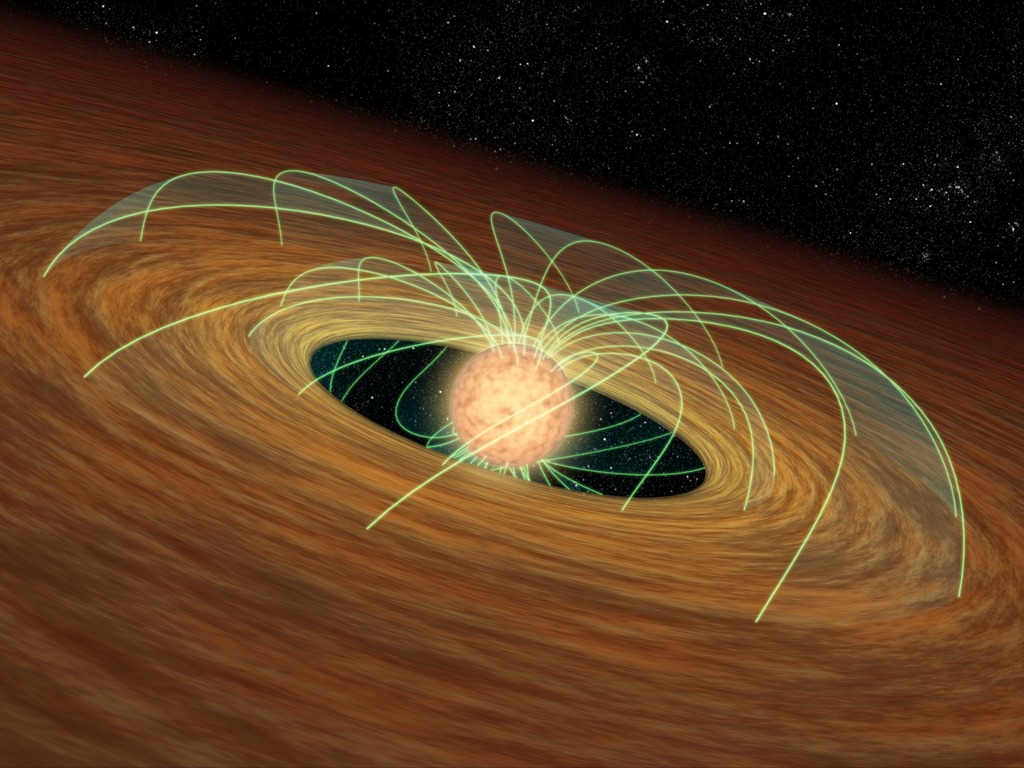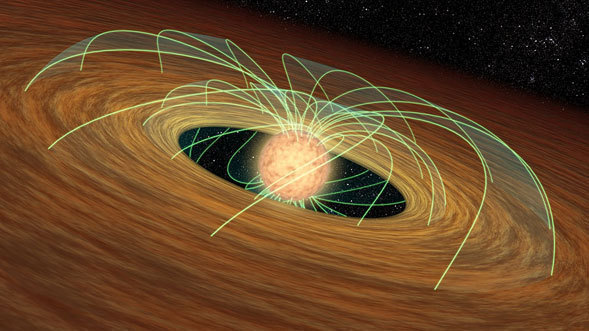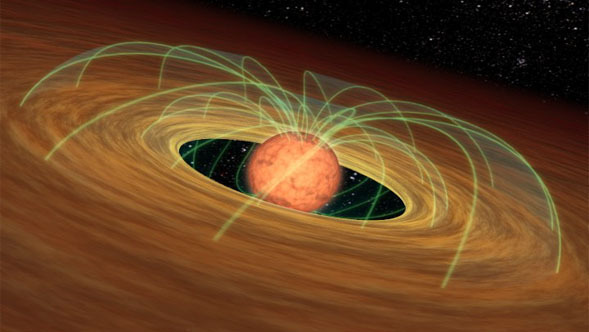
Credit: NASA/JPL-Caltech/R. Hurt (SSC)
Artwork • July 24th, 2006 • ssc2006-15a
ssc2006-15a
This artist's concept shows a dusty planet-forming disk in orbit around a whirling young star. NASA's Spitzer Space Telescope found evidence that disks like this one can slow their stars down, which prevents the stars from spinning themselves to death.
A developing star is essentially a giant ball of gas that is collapsing onto itself. As it shrinks, it spins faster and faster, like a skater folding in his or her arms. As gravity continues to pull matter inward, the star spins so fast, it starts to flatten out. The same principle applies to the planet Saturn, whose spin has caused it to be slightly squashed or oblate.
A forming star can theoretically whip around fast enough to overcome gravity and flatten itself into a state where it can no longer become a full-fledged star. But stars don't spin out of control, possibly because swirling disks of dust slow them down. Such disks can be found orbiting young stars, and are filled with dust that might ultimately stick together to form planets.
How does a disk put the brakes on its star? It is thought to yank on the star's magnetic fields (green lines). When a star's magnetic fields pass through a disk, they are thought to get bogged down like a spoon in molasses. This locks a star's rotation to the slower-turning disk, so the star, while continuing to shrink, does not spin faster.
Spitzer found evidence for star-slowing disks in a survey of nearly 500 forming stars in the Orion nebula. It observed that slowly spinning stars are five times more likely to host disks than rapidly spinning stars.
About the Object
- Name
- Type
- Star > Circumstellar Material > Disk > Protoplanetary






